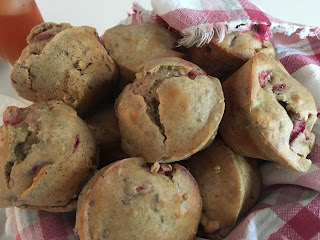The reason I say the ending was a bit disappointing is because it feels as if the author expended all of her energy writing the book until the last 50 pages or so, and then rushed through to get it finished. Where for most of the book we get exquisite detail about situations that range from fox hunting to traveling through time, with well-developed characters a reader can truly want to get to know, and deliciously detailed descriptions of places and events, toward the end after a major, life-changing turn of events is starting to be reconciled, the story becomes little more than a quick by-rote narration of events, including some that are chaotic and emotionally damaging. Gone is the depth of feeling coupled with careful thought and analysis, in favor of a hair-raising churning through a family and friendship-wrecking series of experiences, galloping to an ultimately unsatisfying ending - all at once too brief and almost painful. It would have been better if the author perhaps took a break, thoroughly re-read the book to the point of the return from the multi-century foxhunt, and then carefully continued toward bringing the book to a satisfying close. If the point is, as it seems to be, for the main character to apply lessons learned from history, the same care and attention should have been paid to this portion of the book as was clearly taken in the first two-thirds.
The main character, a middle-aged woman named Pryor (which is a historical name in her family), but for some unknown reason goes by the nickname "Cig," is believable and interesting. She's widowed, self-contained, strong, and raising two teenagers with more than a little aplomb. But she's not perfect - far from it - but her flaws are not unmanageable, nor do they detract from her likability. The ensemble cast of characters is varied and authentic, and the plot for the most part flows smoothly and is easy to follow. Even when the story becomes a bit implausible, it is still very well written and therefore believable, which is the point, I believe.
The conflict that becomes the heart of the story between two sisters is very real, and Cig has long believed there is a truth that her sister Grace is hiding about what happened. In the end, the truth surprises everyone, and I'm not sure it's fully realized or acknowledged. There's a lot of crying and screaming and fit-throwing, which may or may not be cathartic. There are promises made, but whether they are fulfilled is anyone's guess. Some of that truth remains elusive, I think. There could have been more to this story, in that way, as well as others.
The historical characters were endearing and not stereotypical. The scenes during this time were very well done - you can feel the snow on your cheeks, the cold, the sunny breeze on a warm day. There are no laments about the clothing, thank goodness (a personal pet peeve). Cig sees a lot in this time to appreciate and is respectful of the differences, so she learns and adapts very well. I really love this part of the book. You can really see her starting to grow, especially as she feels herself being drawn to the people she meets, some perhaps a bit more than others. She is really good at giving people their due, and is able to develop true friendships, bonding with not only her family members but with several others.
Unfortunately the author attempts to bind the historical story with the modern one in an ultimately dissatisfying way.
Violence is depicted realistically in the book, especially in historical context, where the author shines with not only making it believable, but applicable to the plot and characters. Sadly, the depictions of violence seem either dated, gratuitous, or just wrong in the modern-day (1999) portion.
The title of the book, "Riding Shotgun," is quite dated, trite, and really doesn't apply to anything that happens in the book other than one or two references to "riding shotgun through history" - and what does that even mean? Especially in the context of this book. The main character travels back in time on horseback, where there is no "riding shotgun." It's an inept analogy at best. Books have been re-titled and this one needs to be.
I honestly wonder if the author might revisit the story and write the ending differently, too. If so, the entire book would make a fabulous movie. As a writer, I'm tempted to pen a bit of transformative fiction myself here. As it is, the last quarter of the book brought it down from an otherwise five stars to four. Still a very good read, as I said, but the story that could have been written - like the truth that Cig seeks - is still out there.
Content Warnings:
Moderate: Domestic abuse, Emotional abuse, and Physical abuse
Minor: Emotional abuse
There is minor emotional abuse that I attribute mainly to plot devices that are extremely dated now. However, toward the end, there is a violent physical altercation between two members of the Hunt Club, a married couple that is extremely disruptive, dangerous, and ends up involving others.



















